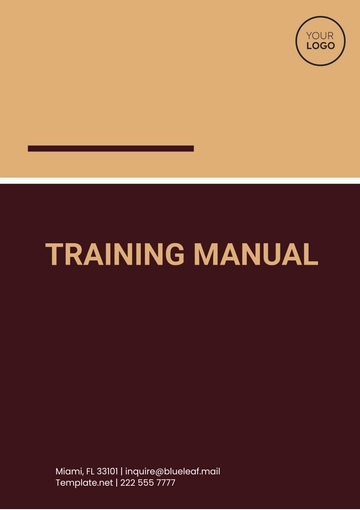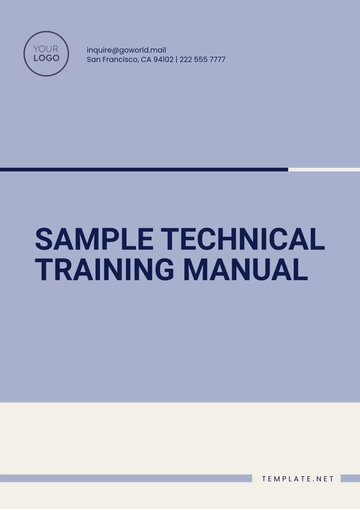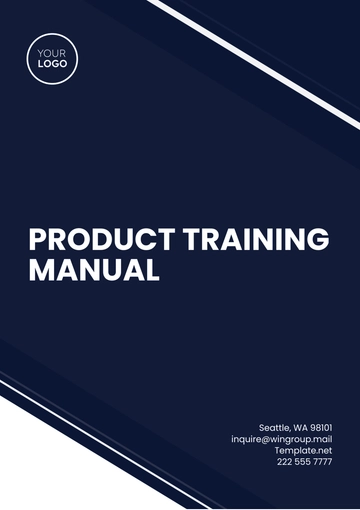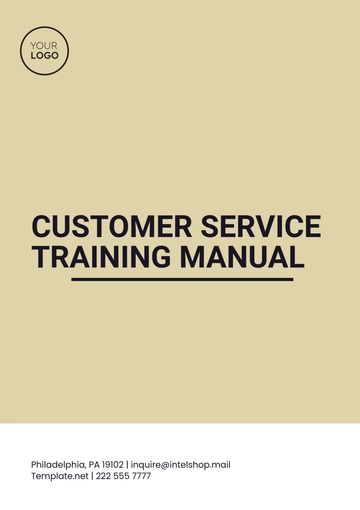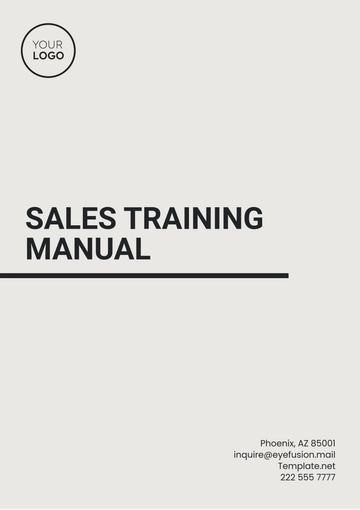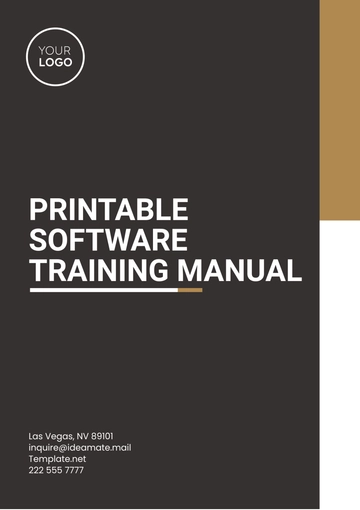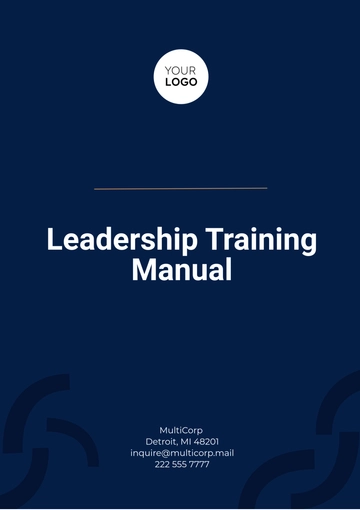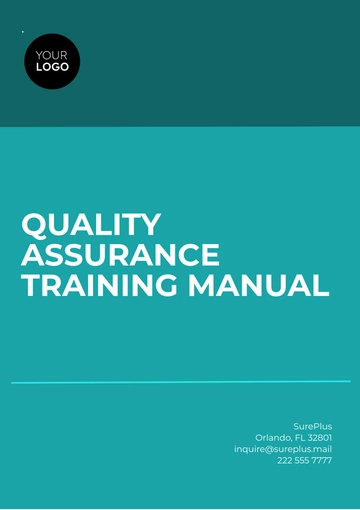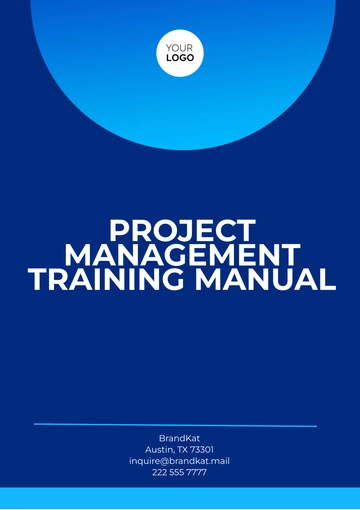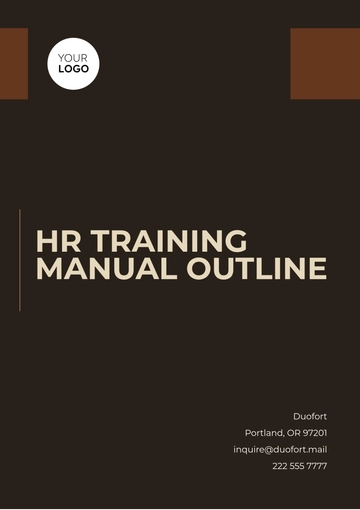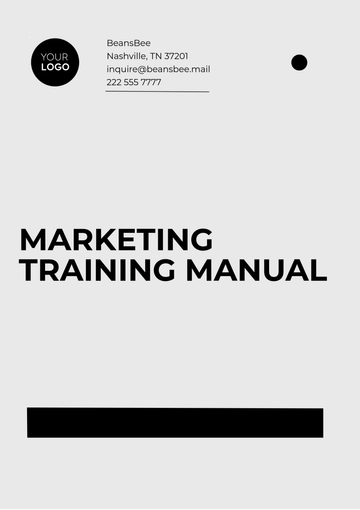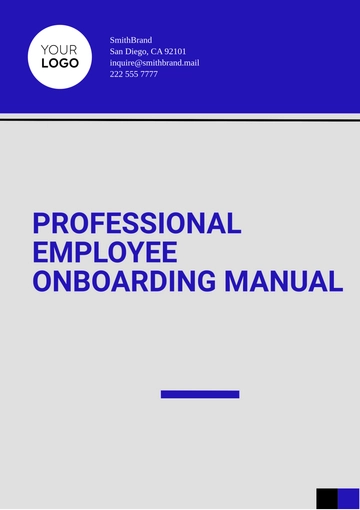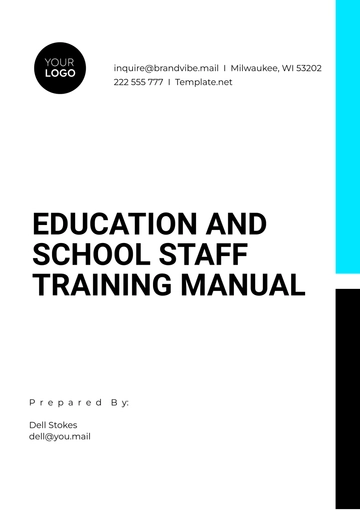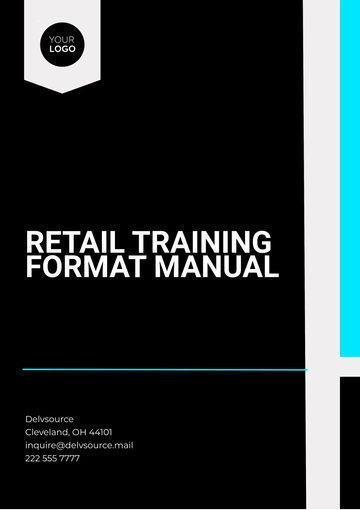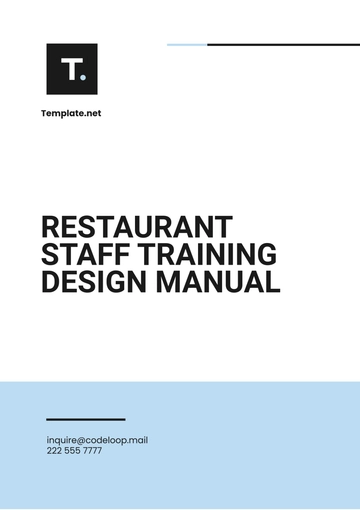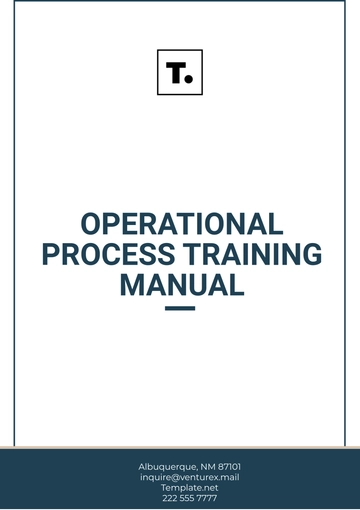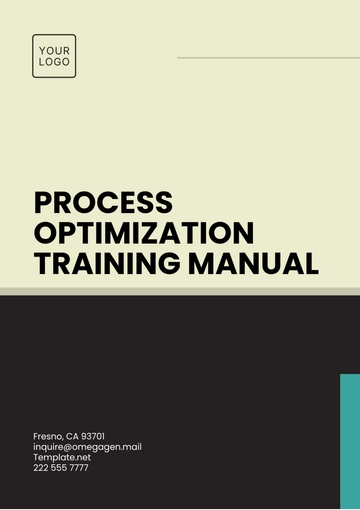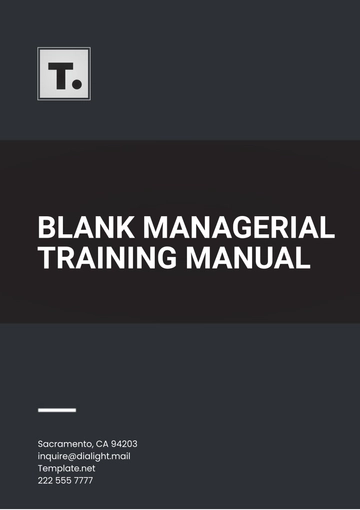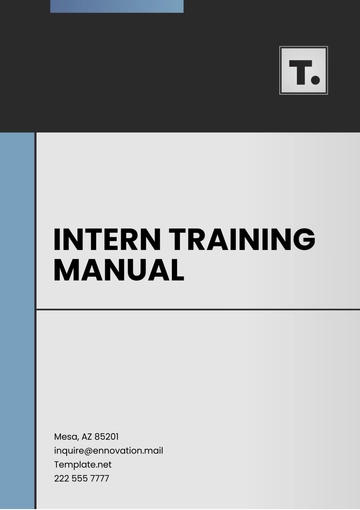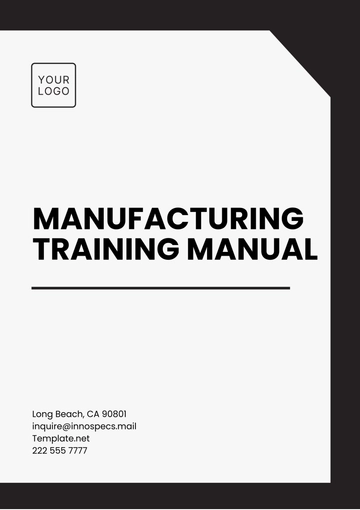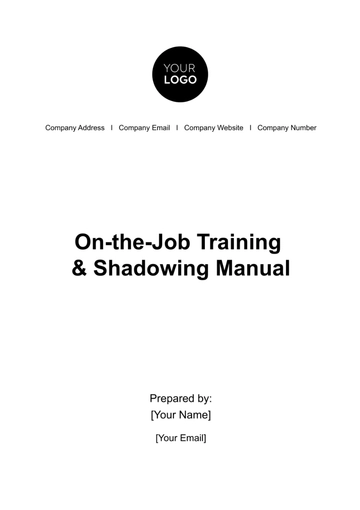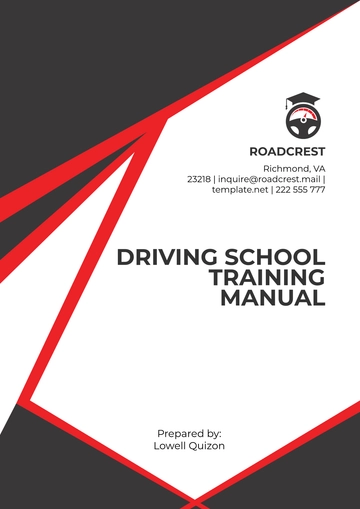Free Education Manual
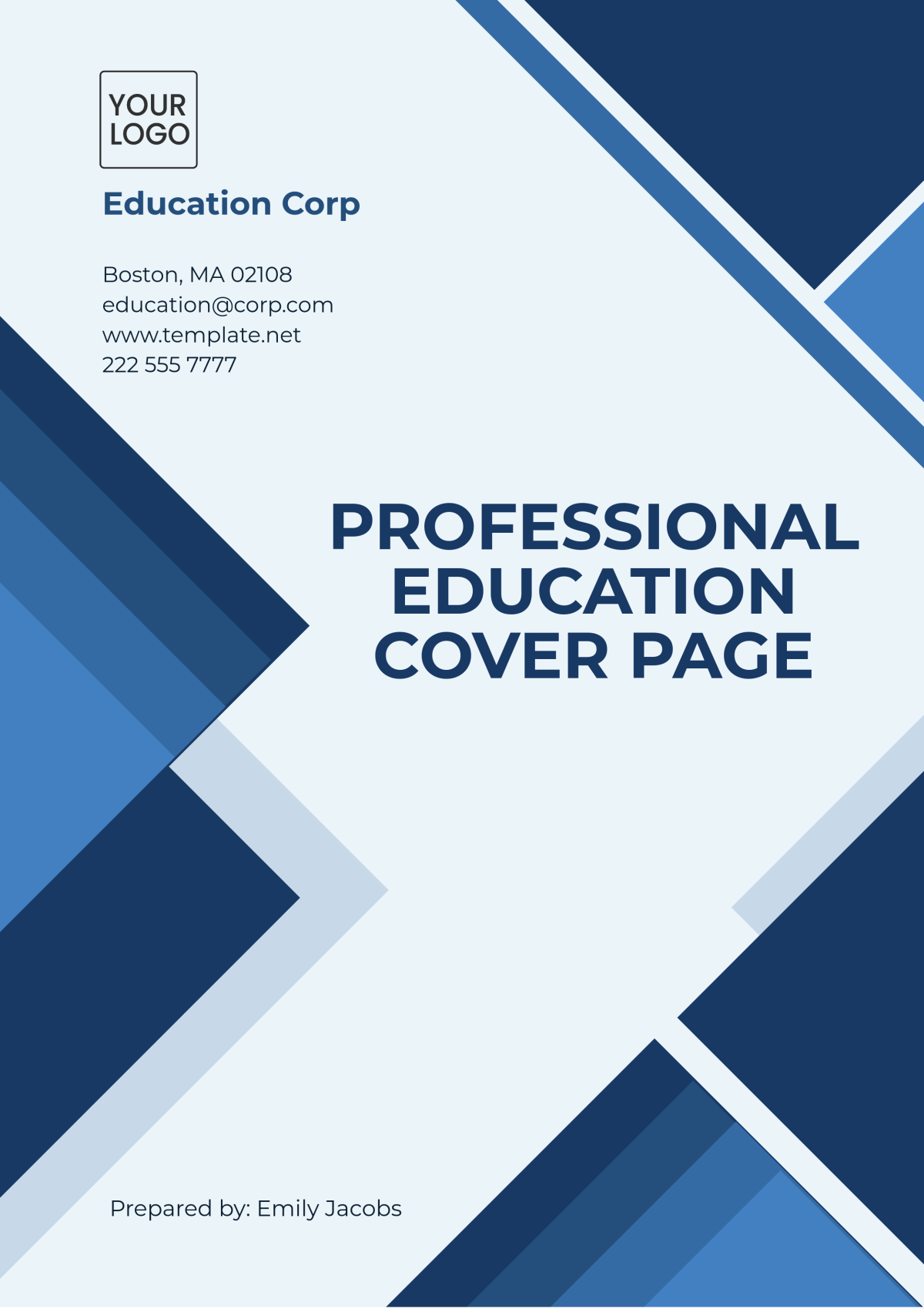
I. Introduction and Overview
This Education Manual is designed to provide a comprehensive guide to the policies, procedures, and best practices that [Your Company Name] follows in delivering educational services and training. It outlines the standards, responsibilities, and expectations for educators, administrators, and support staff to ensure consistent quality and compliance with relevant U.S. laws and regulations. By offering a clear framework, the manual aims to foster a supportive, safe, and productive learning environment for both learners and employees.
Scope and Objectives
The manual covers various aspects of education, including curriculum development, instructional methods, learner assessments, professional development for staff, and operational guidelines. It provides the necessary tools to align our services with industry standards and legal requirements, particularly those related to anti-discrimination, accessibility (ADA compliance), and safety in educational settings.
Objectives
Ensure compliance with U.S. laws and educational standards – This includes adhering to anti-discrimination policies, accessibility requirements, and workplace safety guidelines.
Promote consistency and excellence in educational delivery – Establish guidelines for curriculum development, teaching methods, and learner assessments to uphold quality across all educational programs.
Enhance professional growth and operational efficiency – Provide frameworks for continuous staff development, ensuring all employees have the resources they need to perform their roles effectively and efficiently.
Audience and Usage Guidelines
The intended audience for this manual includes educators, administrative staff, curriculum developers, and any other personnel involved in delivering or supporting educational services at [Your Company Name]. This manual should be used as a reference for understanding procedures, maintaining compliance with regulations, and enhancing the overall learning experience. While the content primarily targets internal staff, it also serves as a resource for stakeholders and partners to understand the operational standards that [Your Company Name] upholds. It is a living document that will be updated regularly to reflect changes in law, best practices, and organizational policies.
II. Compliance Laws and Regulations
At [Your Company Name], we are committed to maintaining full compliance with U.S. laws and regulations governing the education sector. Adhering to these laws not only ensures the legal integrity of our operations but also promotes fairness, accessibility, and quality in the services we provide. The following are key legal frameworks and regulations that guide our educational practices:
1. Americans with Disabilities Act (ADA) Compliance
The ADA mandates that all educational programs and facilities must be accessible to individuals with disabilities. This includes providing reasonable accommodations such as assistive technologies, accessible instructional materials, and modifications to classroom settings. [Your Company Name] ensures compliance by regularly evaluating its physical and digital spaces to remove barriers and promote inclusion for all learners, educators, and staff.
2. Family Educational Rights and Privacy Act (FERPA)
FERPA protects the privacy of student education records and gives parents or eligible students certain rights over those records. At [Your Company Name], we prioritize data privacy by implementing secure systems for the storage and management of student records. We also ensure that personal information is shared only with authorized individuals or agencies, as outlined by FERPA guidelines.
3. Title IX of the Education Amendments Act
Title IX prohibits discrimination based on sex in any federally funded education program or activity. [Your Company Name] upholds Title IX by maintaining a zero-tolerance policy for sexual harassment, ensuring gender equality in educational programs, and promoting a safe and respectful environment for all participants, regardless of gender.
4. Health and Safety Regulations
Compliance with federal, state, and local health and safety regulations, such as the Occupational Safety and Health Act (OSHA), is critical. We maintain safe learning environments by conducting regular safety inspections, providing appropriate safety training, and ensuring that emergency procedures are up to date.
III. Employee Training and Development
At [Your Company Name], we believe that continuous employee development is essential to providing high-quality educational services. Our training programs are designed to equip educators, administrative staff, and support personnel with the skills and knowledge needed to excel in their roles. New hires undergo a comprehensive onboarding process that covers company policies, compliance with U.S. educational regulations, and instructional techniques tailored to various learning environments. Ongoing professional development sessions are also offered throughout the year, focusing on updates in educational standards, diversity and inclusion practices, and technological advancements in education delivery.
Skill Development Opportunities
To ensure that our staff stays at the forefront of educational excellence, [Your Company Name] offers numerous skill development opportunities. These include:
Workshops and Seminars – Employees have access to workshops on teaching strategies, classroom management, and curriculum design, helping them stay informed about the latest trends in education.
Mentorship Programs – New and experienced educators alike benefit from one-on-one mentorship programs where they can share insights and hone their teaching and leadership skills.
Technology Training – As education increasingly moves into digital spaces, we offer training in various educational technologies, including learning management systems (LMS), virtual classrooms, and innovative tools to enhance the learning experience for students.
Soft Skills Development – Courses in communication, conflict resolution, and teamwork are regularly available, ensuring that all staff can work effectively with colleagues, students, and parents.
Continuing Education Requirements
To maintain a high standard of professional expertise, [Your Company Name] encourages employees to pursue continuing education. Staff are required to complete annual professional development hours in areas relevant to their roles, in compliance with state or federal mandates. These requirements vary by position but often include:
Educators: Required to complete a set number of continuing education units (CEUs) related to instructional methods, curriculum updates, or subject-specific training.
Administrative Staff: Must undergo leadership and management training, as well as legal compliance courses, to ensure they are informed about changes in education law and best practices.
We also provide financial support or reimbursement for employees who enroll in accredited courses or certifications that align with their professional growth and the objectives of [Your Company Name]. This emphasis on lifelong learning allows our staff to grow personally and professionally, benefitting both the individual and the organization as a whole.
IV. Health and Safety Procedures
The health and safety of our employees, students, and visitors are a top priority. To ensure a safe working and learning environment, we follow rigorous workplace safety guidelines aligned with federal, state, and local regulations, including OSHA (Occupational Safety and Health Administration) standards. All employees are expected to:
Maintain a Hazard-Free Environment – Keep workspaces, classrooms, and common areas clean and organized to prevent accidents such as slips, trips, and falls. Regular inspections are conducted to identify and address potential hazards.
Follow Safety Equipment Protocols – Use appropriate safety equipment (such as gloves, masks, or other personal protective equipment) when handling hazardous materials, working in laboratory settings, or conducting physical activities that require protection.
Report Unsafe Conditions – Any unsafe condition, malfunctioning equipment, or potential hazards must be reported immediately to supervisors or the safety officer. Prompt reporting ensures swift corrective action.
Comply with Training Requirements – Employees are required to attend regular safety training sessions to stay informed about current procedures and safety measures, including fire safety, first aid, and hazardous material handling.
Emergency Response Protocols
In the event of an emergency, quick and efficient response is critical. [Your Company Name] has established emergency response protocols to ensure the safety of all employees, students, and visitors. Key protocols include:
Evacuation Procedures – In the case of fire, hazardous material spill, or other emergency situations that require evacuation, follow the designated exit routes posted throughout the facility. All employees must participate in regular fire drills and evacuation exercises to ensure readiness.
Medical Emergencies – First-aid kits are available in all major areas of the facility, and trained personnel are available to provide assistance. Employees must report any injuries immediately to a supervisor and, if needed, seek medical attention. Dial 911 for serious injuries.
Lockdown and Shelter-in-Place Protocols – In situations involving a threat to safety (e.g., active shooter or extreme weather), follow lockdown or shelter-in-place protocols. Lock all doors, move away from windows, and remain calm until authorities signal an all-clear.
Communication Systems – Emergency announcements are made through a public address system, text alerts, and email notifications. All employees are required to familiarize themselves with these communication methods and follow the directions provided in real time.
Occupational Health Policies
To promote the well-being of our employees, [Your Company Name] upholds strict occupational health policies. These policies focus on preventing work-related injuries, illnesses, and maintaining overall employee health:
Regular Health Screenings – Periodic health screenings are offered to employees to assess risks and prevent occupational illnesses. Screening programs may include vision and hearing tests, ergonomic assessments, and evaluations for exposure to harmful substances.
Mental Health Support – [Your Company Name] is committed to supporting the mental health of its staff. Employees have access to counseling services and mental health programs, as well as flexible work arrangements when necessary to prevent burnout or stress-related issues.
Ergonomics and Injury Prevention – Employees are encouraged to maintain good ergonomic practices, especially those working in office environments. Training on proper posture, workstation setup, and safe lifting techniques is provided to prevent repetitive strain injuries and musculoskeletal disorders.
Infectious Disease Prevention – In response to health crises (e.g., flu or COVID-19 outbreaks), [Your Company Name] follows CDC guidelines to reduce the spread of illness. This includes promoting hand hygiene, maintaining a clean work environment, and implementing social distancing or remote work when necessary.
By adhering to these health and safety procedures, [Your Company Name] ensures a secure, supportive environment that allows employees and students to thrive while minimizing the risk of injury or illness.
V. Diversity, Equity, and Inclusion
At [Your Company Name], we are dedicated to fostering a culture of diversity, equity, and inclusion (DEI) across all levels of our organization. Our DEI policies are designed to create an environment where every individual—regardless of race, gender, age, religion, sexual orientation, disability, or background—feels respected, valued, and empowered to contribute to our collective success.
Our DEI initiatives include:
Inclusive Hiring Practices – We actively recruit talent from diverse backgrounds to ensure a wide range of perspectives and experiences are represented. Hiring panels are trained to recognize and eliminate unconscious bias during recruitment and promotion processes.
Equitable Access to Opportunities – All employees have equal access to training, mentorship, and advancement opportunities. We regularly evaluate compensation structures to ensure pay equity, regardless of gender, race, or other protected characteristics.
DEI Education and Awareness – Ongoing training programs in cultural competence, implicit bias, and inclusive leadership are mandatory for all employees. We also host DEI workshops, panel discussions, and events to encourage dialogue on the importance of inclusion in the workplace.
Anti-Discrimination and Harassment Policies
[Your Company Name] strictly prohibits discrimination, harassment, or any form of mistreatment based on race, color, religion, sex, national origin, age, disability, sexual orientation, or any other characteristic protected by federal, state, or local law. These policies align with Title VII of the Civil Rights Act, the Age Discrimination in Employment Act (ADEA), the Americans with Disabilities Act (ADA), and other relevant regulations.
Key Components of Our Anti-Discrimination and Harassment Policies:
Zero-Tolerance Policy – Discriminatory behavior, harassment (including sexual harassment), bullying, or retaliation will not be tolerated under any circumstances. Immediate disciplinary action will be taken against those found to be in violation.
Reporting Mechanisms – Employees who experience or witness discrimination or harassment are encouraged to report incidents through multiple confidential channels, including direct supervisors, HR, or an anonymous hotline. Investigations will be conducted promptly and thoroughly.
Accountability and Consequences – Any employee found guilty of discriminatory behavior or harassment will face disciplinary measures, up to and including termination. Regular reviews of workplace interactions ensure that our commitment to an inclusive environment is upheld.
Support and Resources for Employees
[Your Company Name] is committed to providing employees with the support and resources necessary to thrive in a diverse and inclusive workplace. We offer the following resources:
Employee Resource Groups (ERGs) – ERGs are voluntary, employee-led groups that bring together individuals with common backgrounds or interests to support one another, foster connections, and drive inclusion efforts across the company. ERGs also serve as platforms for raising concerns and proposing solutions related to DEI.
Counseling and Mental Health Resources – Employees have access to confidential counseling services and mental health support, including programs focused on managing stress and navigating work-life balance. This is particularly valuable for employees from marginalized groups who may experience additional challenges.
Diversity Councils – Our Diversity Council, composed of employees from various departments, meets regularly to assess our DEI initiatives and recommend new strategies for enhancing inclusivity. The council ensures that DEI remains a priority at all levels of the organization.
Accommodations for Disabilities – In compliance with the ADA, we offer reasonable accommodations to employees with disabilities, including adjustments to workspaces, flexible schedules, and assistive technologies. We also regularly review our policies to ensure inclusivity for employees with physical, mental, and emotional health needs.
VI. Performance Evaluation and Feedback
The performance review process is a structured yet collaborative approach aimed at fostering employee growth, recognizing achievements, and addressing areas of improvement. Our process is aligned with best practices and ensures that evaluations are objective, transparent, and focused on development.
Performance reviews are conducted annually, with additional mid-year check-ins to assess progress. Employees are evaluated based on key performance indicators (KPIs) relevant to their roles, which may include job-specific tasks, team contributions, leadership capabilities, and adherence to company values.
The review process typically follows these steps:
Self-Assessment – Employees complete a self-evaluation, reflecting on their accomplishments, challenges, and areas for improvement.
Manager Assessment – Supervisors review the employee’s performance using a structured assessment form, incorporating input from peers, clients, and other stakeholders if applicable.
One-on-One Meeting – A performance review meeting is scheduled where the manager and employee discuss the results of the assessments, highlight strengths, address areas of improvement, and create an action plan for the next review period.
Documenting the Review – The review is documented, and both the employee and manager acknowledge the outcomes and any follow-up action items.
Goal Setting and Tracking
Effective goal setting is central to our performance management system at [Your Company Name]. Goals are defined collaboratively between employees and managers during the review process and are aligned with both individual career growth and organizational objectives. We use the SMART framework (Specific, Measurable, Achievable, Relevant, and Time-bound) to ensure that goals are clear and attainable.
Key Components of Goal Setting:
Short-Term and Long-Term Goals – Employees are encouraged to set both short-term objectives (to be accomplished within the next review period) and long-term career development goals. These may involve improving specific skills, taking on leadership roles, or working toward certification in relevant areas.
Tracking Progress – Employees and managers are expected to monitor goal progress throughout the year. We utilize performance tracking software to facilitate transparency, allowing both parties to update achievements and address any obstacles in real time.
Adjusting Goals as Needed – If business needs or personal circumstances change, goals can be adjusted during mid-year reviews to ensure they remain realistic and aligned with company priorities.
Methods for Providing Constructive Feedback
At [Your Company Name], we emphasize the importance of providing timely, constructive feedback to support continuous learning and improvement. Our feedback methods are designed to encourage open communication and ensure feedback is delivered in a supportive and productive manner.
The Feedback Sandwich – We employ a feedback model that begins with positive reinforcement, followed by constructive criticism, and ends with encouragement for further development. This approach ensures that employees feel recognized for their strengths while being guided on areas that need improvement.
Real-Time Feedback – Rather than waiting for formal review periods, managers are encouraged to provide feedback on an ongoing basis. This real-time feedback is particularly useful for addressing immediate concerns or recognizing positive behavior as it occurs, allowing employees to make prompt adjustments or continue effective practices.
360-Degree Feedback – For a holistic perspective on performance, we use a 360-degree feedback system where peers, subordinates, and supervisors can provide input on an employee’s work. This system helps to uncover blind spots and reinforces well-rounded development.
Action-Oriented Feedback – Constructive feedback at [Your Company Name] is always tied to actionable steps. After identifying areas for improvement, managers work with employees to develop a clear plan of action that includes specific strategies, resources, or training needed to help the employee improve.
VII. Resources and Support
Employees are encouraged to reach out to the Human Resources (HR) and support teams whenever they need assistance or have questions regarding policies, procedures, or personal matters. HR serves as the primary point of contact for employment-related concerns, including benefits, workplace policies, and professional development.
Key HR Contacts
HR General Inquiries: | [Your Company Email] | [Your Company Number] |
Benefits and Compensation: | [Your Benefits Coordinator Email] | [Your Benefits Coordinator Number] |
Employee Relations: | [Your Employee Relations Contact Email] | [Your Employee Relations Contact Number] |
In addition to HR, employees can access specific support services, such as IT helpdesk or facility management, through internal communication platforms or by contacting department-specific emails and phone numbers. HR also offers an open-door policy to address sensitive matters, including discrimination or harassment complaints.
Access to Additional Learning Resources
[Your Company Name] is committed to fostering continuous learning and professional development. Employees have access to a variety of additional learning resources to enhance their skills and stay updated with industry trends.
Internal Learning Management System (LMS) – Employees can log into our LMS to access a library of training modules, tutorials, webinars, and courses covering a wide range of topics such as leadership, technology, communication skills, and industry-specific knowledge.
External Learning Platforms – We partner with external educational platforms like LinkedIn Learning, Coursera, and Udemy to provide employees with further training opportunities. Discounts or reimbursements for relevant certifications or continuing education programs are available for those seeking additional qualifications.
Knowledge-Sharing Workshops – Regular knowledge-sharing sessions and workshops are organized internally, where employees can share insights, best practices, and expertise on emerging topics. These workshops encourage collaboration and help build a culture of continuous learning.
Employee Assistance Programs (EAP)
[Your Company Name] understands that employees may face personal challenges that impact their well-being and productivity. To support them, we offer comprehensive Employee Assistance Programs (EAP) that provide confidential resources to help employees manage personal and work-related issues.
Key EAP Services Include:
Counseling Services – Professional counseling is available for employees dealing with stress, anxiety, relationship issues, or other emotional health concerns. These services are provided confidentially through licensed professionals, either in-person or virtually.
Work-Life Balance Support – Our EAP offers guidance on managing personal responsibilities such as childcare, eldercare, and financial planning. Employees can access expert advice or referrals for services that help them navigate life’s challenges more effectively.
Crisis and Trauma Support – Employees who experience traumatic events, such as a death in the family or an unexpected crisis, can access immediate support through the EAP, which offers grief counseling and crisis intervention services.
Substance Abuse Assistance – For those struggling with substance use, the EAP provides confidential help, including referrals to treatment programs, recovery resources, and counseling.
All EAP services are confidential and available to both employees and their immediate family members at no cost. Accessing these services is simple—employees can contact the EAP directly via a dedicated hotline or online platform.
By offering these resources and support systems, [Your Company Name] ensures that employees have the tools they need to succeed, both personally and professionally, contributing to a healthy, balanced, and productive workplace.
Thank you for reviewing the [Your Company Name] Education Manual. This comprehensive guide is designed to support our commitment to excellence by providing clear policies, procedures, and resources that enhance our educational environment. We encourage all employees to utilize this manual as a valuable resource for understanding our standards, accessing support, and advancing your professional development. Your adherence to these guidelines ensures we maintain a respectful, safe, and inclusive workplace. For any questions or additional support, please reach out to the appropriate contacts provided. Together, we strive for continuous improvement and success.
- 100% Customizable, free editor
- Access 1 Million+ Templates, photo’s & graphics
- Download or share as a template
- Click and replace photos, graphics, text, backgrounds
- Resize, crop, AI write & more
- Access advanced editor
Create organized and comprehensive instructional materials with the Education Manual Template. This fully customizable and editable template is ideal for outlining procedures and guidelines. Editable in our AI Editor Tool, you can find this template on Template.net, making it easy to tailor the manual to fit your institution’s needs.
